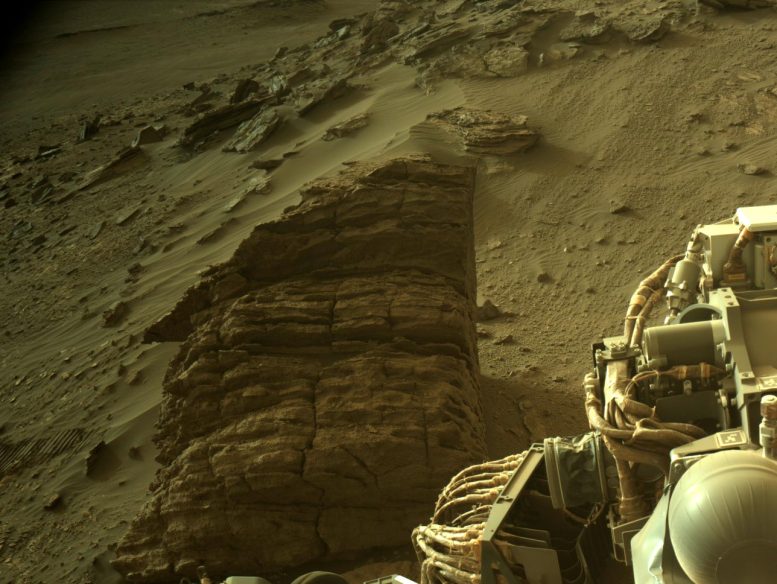
Perseverance sizes up Betty’s Rock on Sol 477 (June 23, 2022): This interesting layered rock likely originated from an outcrop above, but its rough surface and sharp angles prevented Perseverance from collecting a core. Instead, we will bump to Skinner Ridge Rock, a nearby target that looks similar to Betty’s Rock but is likely more approachable for sampling. Credit: NASA/JPL-Caltech
NASA’s Mars Perseverance rover has a big job to do while roving across Jezero and exploring the Delta Front, which is campaign #2 of the mission. One of the major goals of this mission (and campaign) is searching for evidence of past Martian life, and we know from researching deltas on Earth that fine-grained clay-rich rocks in these environments are some of the best at preserving ancient biomarkers. Biomarkers, or “molecular fossils,” are complex organic molecules created by life and preserved in rock for up to billions of years for particular molecular classes.
Perseverance is working toward this goal by drilling core samples that will eventually be returned to Earth where future scientists can analyze them in advanced laboratories. In these labs, they will use instruments and techniques capable of identifying and extracting organics to characterize their molecular structures in detail. These investigations can assist in determining whether any organic molecules contained in Martian delta rocks are biomarkers or abiotic (non-biological) organics. Sample return is one of the most important strategies this mission is using to probe for evidence of past life in Jezero!
Perseverance and the research and engineering teams are working together to pick the right rocks to core, using a suite of onboard instruments to understand mineralogy, elemental distributions, and detect whether organic molecules are present. This process helps triage samples and predict which ones are most likely to contain potential biomarkers. However, choosing and collecting samples is often challenging, and there is always a tradeoff between scientific interest and engineering constraints. Sometimes, fragile materials fracture, crack, or even crumble during the abrasion and coring process, and other rocks have tricky shapes and angles that make drilling difficult or impossible.
Last week, the team hoped to sample Betty’s Rock, a layered rock made up of alternating coarse-grained and fine-grained materials. It appears that Betty’s Rock came from the Rocky Top outcrop many meters above, breaking free and landing near the bottom of the delta front at some point in the past. Although this target was intriguing, the team soon found that its jagged layers and awkward shape prevented the rover from safely maneuvering its arm and placing the corer on the target to abrade and drill.
However, all is not lost! After looking around the workspace, the team spotted Skinner Ridge Rock, a low-lying rock that looks very similar to Betty’s Rock, but with a much more approachable shape for potential abrasion and coring. We plan to bump the rover over to this target, study its composition, and hopefully collect a sample. This process will take several sols (days on Mars) to complete, but we all have our fingers crossed for success. Exploring Mars can be a lot of work, but it’s called Perseverance for a reason!
Written by Denise Buckner, Student Collaborator at the University of Florida.



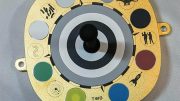
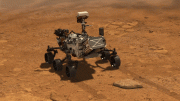

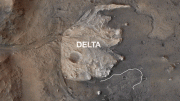
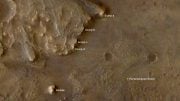

Whoever is running the science end of Perseverance needs to quit pissing off and get some science done. If they cannot, then get someone who will. Stop milking the Mars cow NASA. You found organic matter in 1976 but buried it with the test creators career. Bunch of losers.
Mars Sample Return will be great science! But we also cannot risk our only Earth with the possibility of return of a new pathogen or invasive species of microbe from Mars. Even though NASA (and I’m sure the Chinese National Space Agency) plan to keep the samples contained, mistakes and accidents do happen. Best to test the samples for life off Earth first, perhaps the ISS or future a lunar Gateway. Bottom line is Protect Earth from Mars Sample Return!